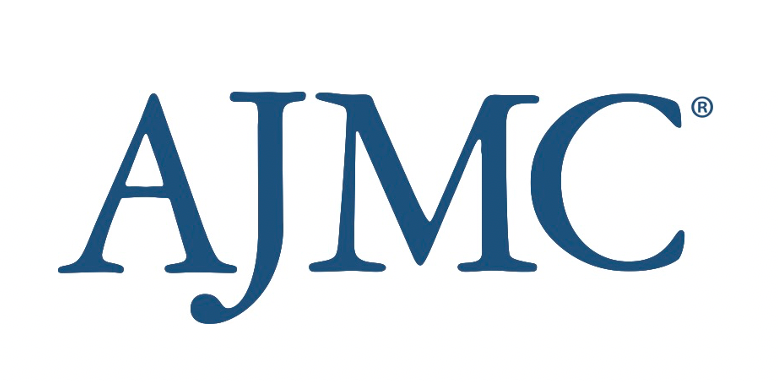News
Article
Crohn Disease Subtype, Ocular Manifestation Among Risk Factors for EIMs in IBD
Author(s):
Key Takeaways
- Up to 40% of IBD patients may experience EIMs, with higher risks in Crohn disease and specific disease locations.
- Five key risk factors for EIMs include disease type, sex, ocular manifestations, disease location, and co-occurrence with another EIM.
Up to 40% of patients with inflammatory bowel disease (IBD) experience extraintestinal manifestations (EIMs), with the highest risks among those with Crohn disease, ocular manifestations, or right-sided colonic involvement.
Up to 40% of patients with inflammatory bowel disease (IBD) may experience extraintestinal manifestations (EIMs), with the highest risks seen among those with Crohn disease, ocular manifestations, or disease involvement in the right colon, according to a study.1
The retrospective analysis, published in Inflammatory Bowel Diseases, assessed patients with IBD enrolled in the Study of Prospective Adult Research Cohort with IBD (SPARC IBD), the initial findings of which were published in 2022.2 Researchers established SPARC IBD to develop a database of clinical and patient-reported data as well as biosamples from patients with IBD to help identify mechanisms of disease and predictors of treatment response.
The present analysis aimed to improve understanding of EIM development by analyzing its likelihood in different IBD subtypes, disease locations, and risk factors.1
Researchers included available data on 1211 patients with EIMs from 17 treatment sites across the US, 329 of whom have at least 1 EIM and 882 of whom didn't have any. The median age was 41.8 (IQR, 30.0-53.0), and all patients had a diagnosis for Crohn disease (n = 786; 64.7%) or ulcerative colitis (n = 425; 35.1%).
The analysis compared participants' baseline demographic and clinical characteristics based on disease status and the presence or absence of an EIM history. Additional subanalyses were conducted, which were used to stratify participants by individual EIMs.
By EIM, patients with Crohn disease had higher rates of IBD-associated arthritis, ocular issues (inflammation, dryness, and light sensitivity), erythema nodosum, and pyoderma gangrenosum, while ulcerative colitis was linked with primary sclerosing cholangitis. | Image credit: sebra - stock.adobe.com.

Identify EIM Risk Factors From SPARC IBD Data
Overall, the researchers detected 5 key risk factors for patients with IBD to develop an EIM:
- Disease type
- Sex
- Ocular manifestations
- Disease location
- Co-occurrence with another EIM
Patients with Crohn disease (29.6%) were more likely to experience an EIM than patients with ulcerative colitis (22.6%), with the researchers identifying that Crohn disease also had an association with multiple EIMs (6.0% vs. 1.9%). By EIM, patients with Crohn disease had higher rates of IBD-associated arthritis, ocular issues (inflammation, dryness, and light sensitivity), erythema nodosum, and pyoderma gangrenosum, while ulcerative colitis was linked with primary sclerosing cholangitis.
Women, particularly those with Crohn disease, were also more likely than men to experience an EIM (31.8% vs. 21.5%). Additionally, women were more likely to receive advanced therapies compared with men, including anti-tumor necrosis factor therapy, vedolizumab, and immunomodulators.
Patients with at least 1 EIM were more likely to receive advanced therapies, including anti-tumor necrosis factor therapy (74.8% vs. 61.7%), vedolizumab (27.9% vs. 19.7%), and immunomodulators (65.6% vs. 53.5%). In Crohn disease, EIMs were linked to higher rates of perianal disease (27.0% vs. 19.5%), upper gastrointestinal involvement (18.9% vs. 12.4%), and ileocolonic disease (57.9% vs. 46.0%) compared with ulcerative colitis.
Certain EIMs often co-occurred, especially IBD-associated arthritis with ocular issues or erythema nodosum. Right-sided colonic disease was linked with IBD-associated arthritis, even when controlling for disease type and other factors.
The Relationship Between EIMs and IBD
EIMs are a common and “at times debilitating” complication associated with IBD, a condition that impacts about 1% of the US population and includes Crohn disease and ulcerative colitis.3 One study estimated that about 50% of patients with IBD experience EIMs, which can affect multiple organ systems, leading to conditions like peripheral and axial inflammatory arthritis, episcleritis/uveitis, primary sclerosing cholangitis, and erythema nodosum and pyoderma gangrenosum.4,5
Additionally, recent data presented at the Crohn’s & Colitis Congress 2025 showed that vedolizumab therapy correlated with higher risks of cardiovascular complications compared with ustekinumab treatment, both of which are often considered first-line therapy options for IBD.6
EIMs can even occur when patients are on biologic therapy or during flares, highlighting their potential link to active intestinal disease.7 However, some EIMs, like uveitis and ankylosing spondylitis, don’t align with intestinal disease activity and often require additional treatment with immunosuppressive and anti-inflammatory therapies.8 The authors said that because of this, identifying better predictors of EIM development was critical.1
“This will be important as we enter an era of precision medicine with the availability of multiple therapeutic modalities," the authors concluded. "In the future, another opportunity for further investigation is exploring the role of intestinally localized microbiome in subjects with EIMs to see if this can be a potential therapeutic target for symptom control.”
References
1. Alizadeh M, Motwani K, Siaton BC, et al. Factors associated with extraintestinal manifestations of inflammatory bowel disease in SPARC-IBD. Inflamm Bowel Dis. 2024;30(11):2027-2036. doi:10.1093/ibd/izad280
2. Raffals LE, Saha S, Bewtra M, et al. The development and initial findings of a study of a prospective adult research cohort with inflammatory bowel disease (SPARC IBD). 2022;28(2):192-199. doi:10.1093/ibd/izab071
3. Xu F, Liu Y, Wheaton AG, Rabarison KM, Croft JB. Trends and factors associated with hospitalization costs for inflammatory bowel disease in the United States. Appl Health Econ Health Policy. 2019;17(1):77-91. doi:10.1007/s40258-018-0432-4
4. Vavricka SR, Schoepfer A, Scharl M, et al. Extraintestinal manifestations of inflammatory bowel disease. Inflamm Bowel Dis. 2015;21(8):1982-1992. doi:10.1097/mib.0000000000000392d
5. Levine JS, Burakoff R. Extraintestinal manifestations of inflammatory bowel disease. Gastroenterol Hepatol. 2011;7(4):235-241. PMID: 21857821
6. Jeremias S. Abstracts highlight access barriers, CV risks associated with IBD care. AJMC.com. February 11, 2025. Accessed February 21, 2025. https://www.ajmc.com/view/abstracts-highlight-access-barriers-cv-risks-associated-with-ibd-care
7. Veloso FT. Extraintestinal manifestations of inflammatory bowel disease: do they influence treatment and outcome? World J Gastroenterol. 2011;17(22):2702-2707. doi:10.3748/wjg.v17.i22.2702
8. Walker D, Orchard T. Do extraintestinal manifestations predict disease course, severity, and/or activity in IBD? Inflamm Bowel Dis. 2008;14(Suppl 2):S200-S201. doi:10.1002/ibd.20637





